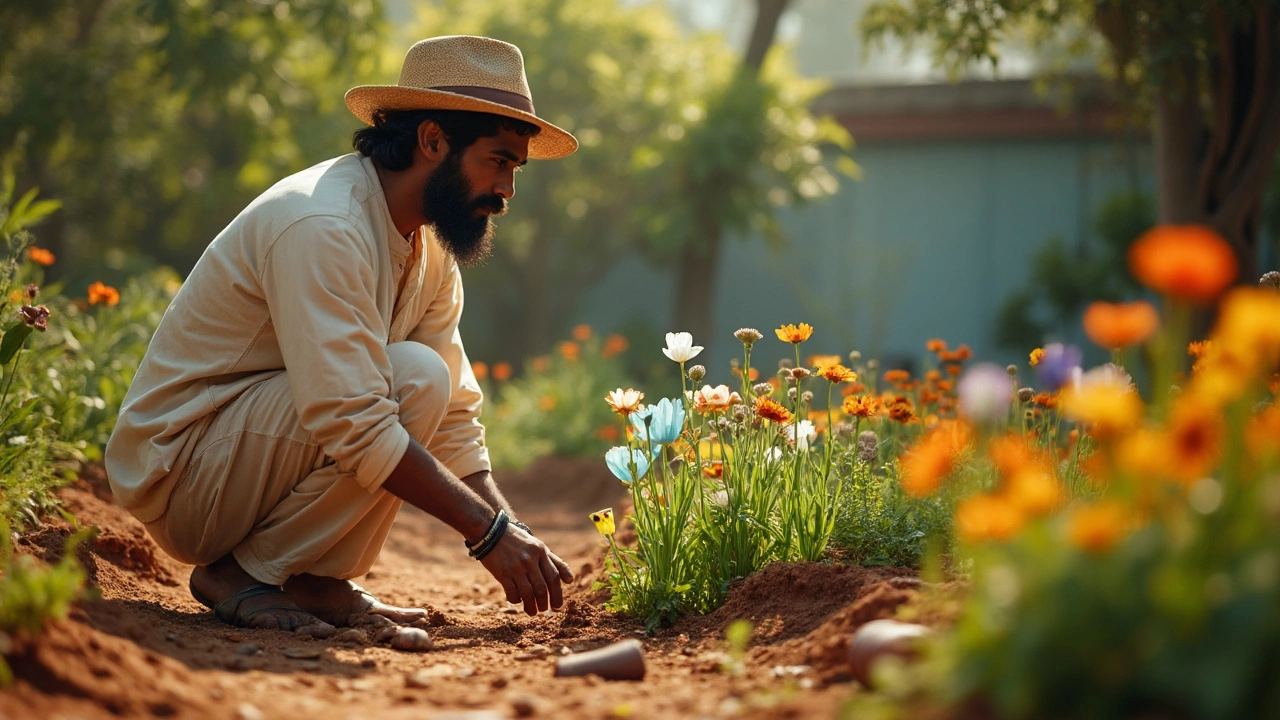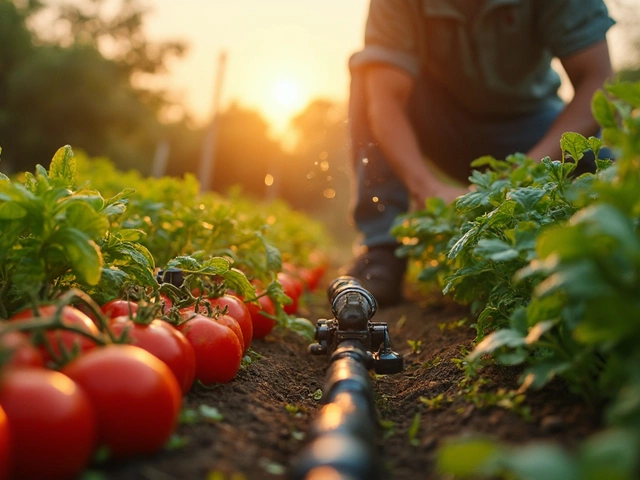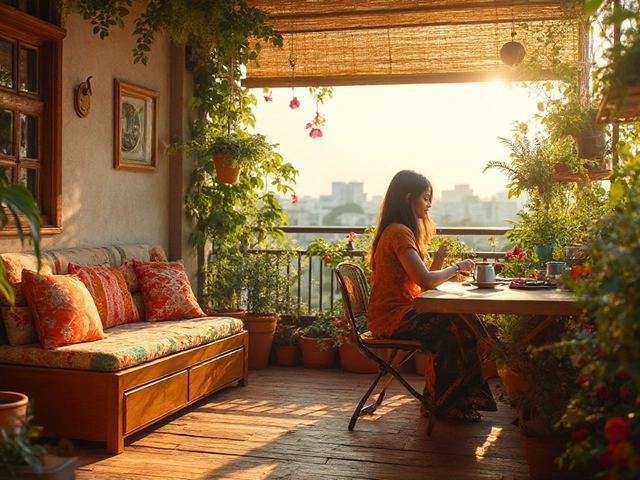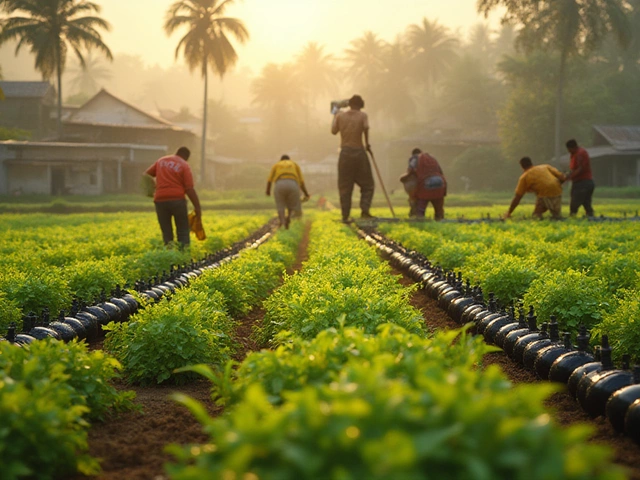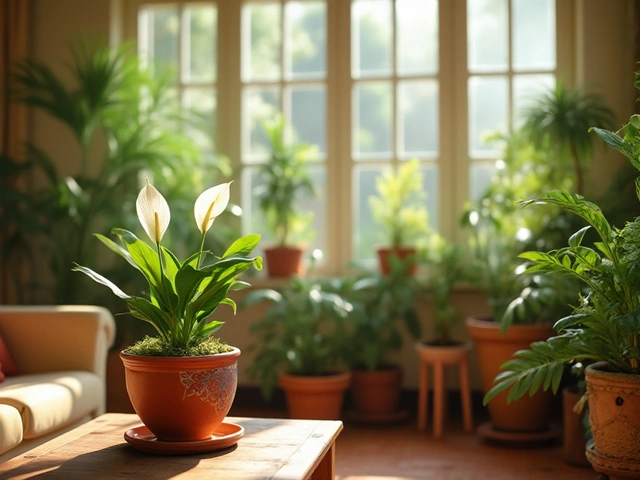Think roses are tricky to grow? Try convincing a blue Himalayan poppy to bloom in Indian soil. You can water, pamper, and even whisper to your flowers, but some just refuse to cooperate, no matter what you do. If you’re eyeing up an empty patch in your yard and dreaming big, it's worth knowing which flowers are likely to fight you every step of the way.
The so-called 'hardest flower to grow' in India isn’t just based on rumors. Gardeners all across the country swap stories about their failures with these stubborn beauties. With unpredictable weather, baking summers, and the stubborn clay soil in some regions, it’s honestly impressive when anyone pulls off a rare bloom in these conditions. If you’re the sort who loves a good gardening challenge—or just want to know why some flowers never make it past seedling—stick around. Real advice ahead, not just wishful thinking.
- Why Some Flowers Are So Stubborn
- The Blue Himalayan Poppy: India’s Toughest Bloom
- Classic Mistakes and How the Pros Avoid Them
- Other Painfully Picky Flowers
- Is the Challenge Worth It? Tips for Thrill Seekers
Why Some Flowers Are So Stubborn
Ever planted a pack of seeds and watched them stubbornly refuse to sprout, even though you followed the directions? There are some solid reasons for that. Not all flowers are created equal—some need special soil, cooler temperatures, or extra care that’s just not common in most Indian backyards. If you pick the wrong flower for your climate, it pretty much laughs in your face.
For a lot of these tough flowers, it boils down to three things: climate, soil, and patience. For example, the hardest flower to grow in India—like the blue Himalayan poppy—needs chilly, moist weather. Try growing that during a Delhi summer, and you’ll just get dry, sad leaves. Here’s why these factors matter so much:
- Temperature: Some flowers survive only in a narrow temperature range. Too much heat or random cold snaps? Game over.
- Soil: Lots of fancy flowers want loose, well-draining soil, free from the sticky clay you’ll find in big parts of India. Changing your soil isn’t always easy or cheap.
- Humidity and Rain: Many rare flowers want regular mist and rain, which is the exact opposite of dry regions like Rajasthan.
- Light: Some flowers need bright but indirect sunlight; too much direct sun can scorch delicate petals right off.
Here's a quick look at why different regions in India have a rough time with these picky flowers:
| Region | Common Soil Type | Average Summer Temp (°C) | Humidity |
|---|---|---|---|
| Delhi | Clay | 40+ | Low |
| Kerala | Laterite | 35 | High |
| Himachal Pradesh | Sandy loam | 25 | Medium |
| Rajasthan | Sandy | 45+ | Low |
So the next time you struggle with a disappointing flowerbed, it’s not just bad luck. Between the climate, your soil, and the plant’s diva attitude, it’s a real challenge. But knowing what makes them stubborn helps you pick flowers that will actually reward your hard work—or, if you’re feeling brave, prep for a satisfying challenge.
The Blue Himalayan Poppy: India’s Toughest Bloom
If you ask around in any Indian gardening group about the hardest flower to grow, the blue Himalayan poppy (Meconopsis betonicifolia) almost always comes up. People love those unbelievable blue petals, but growing this plant outside its natural Himalayan turf is just brutal. It’s like trying to raise a penguin in Rajasthan—lots of effort, not much reward.
This flower needs everything just right. You can’t fake it. First up, it wants cool summers and chilly winters, since it’s used to high Himalayas like Sikkim or Arunachal Pradesh—places where it rains loads and rarely gets hot. It hates direct sun, clay soil, hard water, and any temperature above 26°C. A sudden heatwave? Your poppy is toast, literally.
Let’s break down what gives Indian gardeners headaches with this one:
- Soil: Needs rich, loose, slightly acidic soil (pH around 5.5-6.0). Typical Delhi or Mumbai garden soil? Too sticky and usually not acidic enough.
- Water: Has to be damp, but not soggy. A day of neglect and the roots dry up; too much and they rot.
- Temperature: Thrives best between 12°C–20°C. Gets sluggish or dies if it gets hotter. That rules out basically all of North India in May-June.
- Light: Likes filtered sunlight, similar to a forest floor in the hills. Full sun scorches it in no time.
Here’s how the stats stack up, just to highlight the odds:
| Condition | Ideal for Blue Poppy | Common in Indian Plains |
|---|---|---|
| Soil pH | 5.5–6.0 | 7–8 (alkaline in most places) |
| Summer Temperature | Below 20°C | 32–45°C |
| Rainfall Needs | High, regular moisture | Monsoon, then dry spells |
| Sunlight | Filtered light | Mostly harsh direct sun |
People have had some luck recreating these microclimates—shade netting, soil mixing, manual misting, even running air conditioners in small glasshouses! But honestly, you’ll rarely see more than a handful catch sight of those flowers in metro cities. If you live in a higher-altitude spot and can control the shade and moisture, you might have a fighting chance. Otherwise, you’ll watch jealous posts from folks in Sikkim on Instagram and wonder why your seeds never sprouted.
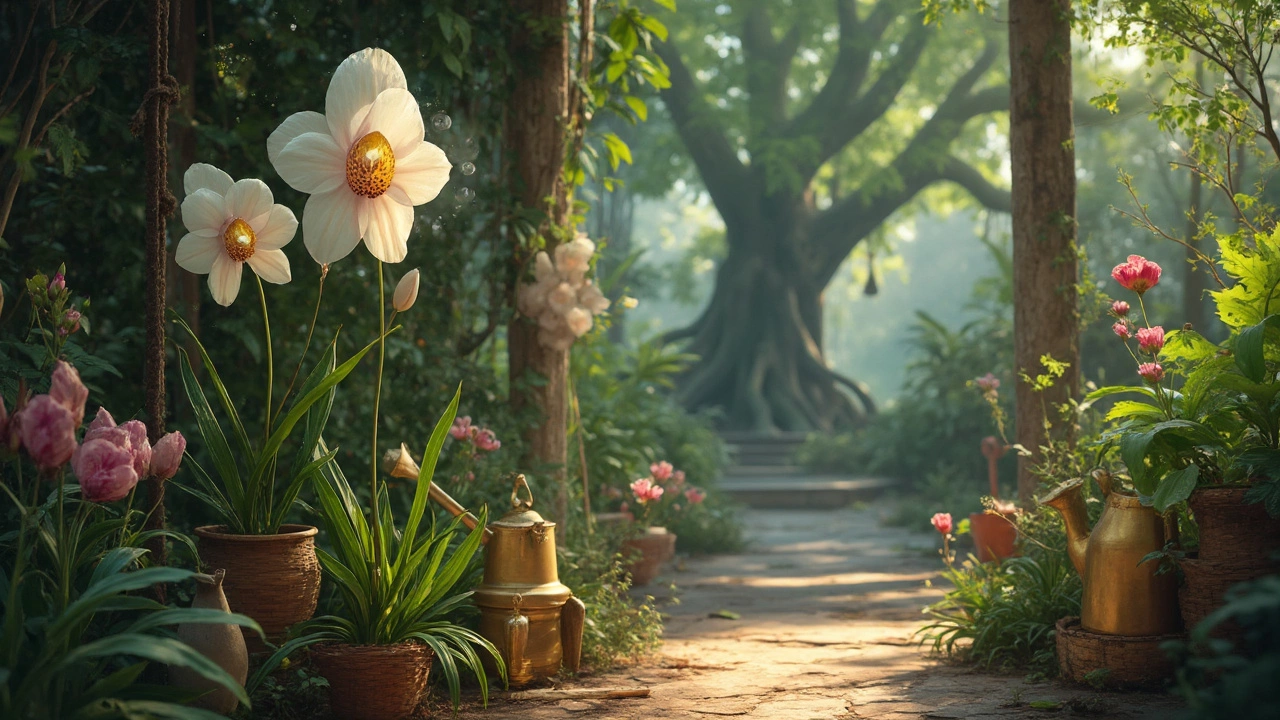
Classic Mistakes and How the Pros Avoid Them
If you're struggling to get the hardest flower to grow to survive in your garden, you’re not alone. Even experienced folks mess this up, especially when dealing with difficult varieties like the blue Himalayan poppy. Here’s what trips people up most.
- Overwatering or Underwatering: One of the quickest ways to kill rare flowers. Blue Himalayan poppies hate soggy roots but dry spells aren’t any better. Aim for soil that’s a little damp, not flooded or cracked.
- Ignoring Soil Acidity: Your regular garden soil won’t cut it. These flowers need acidic soil (pH 5.0–6.5). Neutral or alkaline earth will stop them before they start. If you’re not testing your soil, you’re guessing—and likely failing.
- Planting at the Wrong Time: Don’t drop seeds just because you’re impatient. Poppies need cool weather to sprout properly. Plant in late winter or early spring in India for best results.
- Skipping Shade Issues: Too much sun will scorch Himalayan poppies. Partial shade is a must, especially during hot Indian afternoons. Most new gardeners miss this and wind up with crispy leaves.
- Using Tap Water: Hard tap water loaded with minerals can mess with pH and cause leaf spotting. Stick with rainwater if you can collect it.
Check out this quick reference table on what usually goes wrong and how to fix it:
| Mistake | What Happens | Pro Fix |
|---|---|---|
| Wrong soil pH | Poor germination, stunted growth | Test soil, add peat moss or sulfur |
| Too much watering | Root rot, yellow leaves | Drainage holes, check soil moisture often |
| Planted in full sun | Wilted, burned leaves | Find a partial shade spot |
| Ignore mulch | Soil dries out fast | Mulch around the roots |
| Used regular tap water | Leaf spots, weak plants | Use rainwater or filtered water |
Rohan once asked, “Why are your poppies always drooping, Dad?” Well, that’s what happens when you forget even one small detail. Nothing is forgiving about these flowers. According to K.C. Pradhan, a Himalayan horticulturist,
"Patience and precision matter more with blue poppies than with almost any other garden plant in India. One slip and you’re back to square one."Stick to the basics, pay attention to details, and you’ll avoid most rookie mistakes. The pros aren’t lucky—they’re just obsessed with doing every step right.
Other Painfully Picky Flowers
Think the hardest flower to grow in India is all about the Himalayan poppy? Not a chance. Plenty of flowers test the nerves (and patience) of even the most committed gardeners. Some are fussy about temperature, while others demand the weirdest soil or humidity setups. Here are more flowers that love to make gardeners sweat:
- Lilies of the Valley: These guys look sweet but are huge divas about soil and shade. Too much sun, and they shrivel. A hot Indian summer? They barely stand a chance.
- Tulips: Looks simple, right? But most tulip varieties hate warm winters and high humidity. People get excited by those Instagram-worthy bulbs, then watch them flop in the first season if conditions aren’t basically perfect.
- Orchids (cold-growing types): While some tropical orchids can handle India’s heat, plenty want cool nights and filtered sun. That’s a tall order unless you run a full-on greenhouse at home.
- Hydrangeas: These are the moody teenagers of the flower world. They’re super picky about pH—if your soil isn’t just right, you won’t see those famous blooms. Some species also sulk if the humidity is wrong or if they get a blast of afternoon sun.
- Freesias: Getting these to bloom in India is almost a running joke. They need a mix of cool nights, warm days, and gentle TLC. Miss one step and you get nothing but leaves.
Check out this table for a quick reality check on what these flowers actually demand versus common local climates:
| Flower | Fussy About | Indian Compatibility |
|---|---|---|
| Lily of the Valley | Shade, cool moist soil | Low (struggles in heat) |
| Tulip | Cold winters, dry air | Very Low (needs chilling, hates humidity) |
| Orchid (cold types) | Cool temps, indirect light | Low (hot nights are dealbreakers) |
| Hydrangea | pH, humidity, afternoon shade | Moderate (needs tweaking soil, careful watering) |
| Freesia | Cool, mild nights, gentle care | Low (Indian summers usually too harsh) |
If you’re tempted to try any of these, be ready to experiment with shade nets, soil testing kits, and maybe even a few sleepless nights worrying if the monsoon will ruin everything. Some folks do pull it off, often by tweaking every possible condition. But if you ask around, most gardeners will admit these plants made them question their life choices more than once!
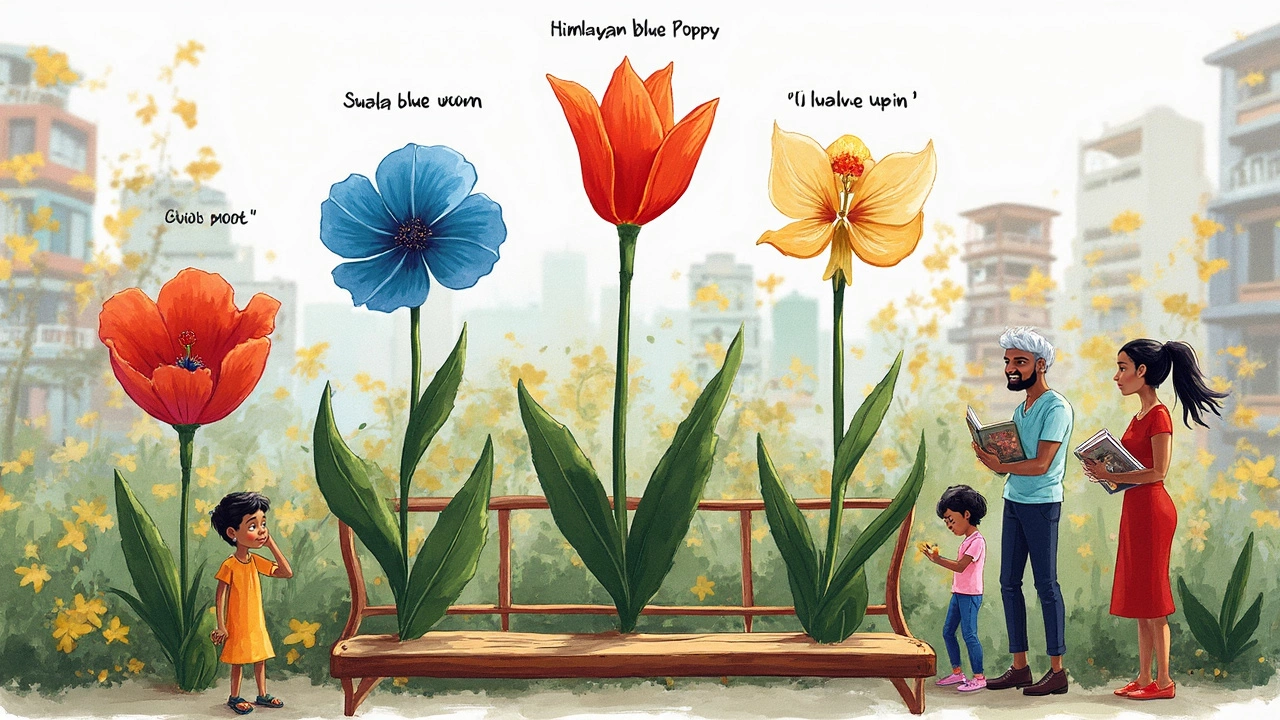
Is the Challenge Worth It? Tips for Thrill Seekers
If you like taking on impossible tasks, raising the hardest flower to grow will give you plenty of stories to tell. People who pull off a blue Himalayan poppy bloom in India are a rare breed. Honestly, you’ll learn almost as much from your failures as your wins. But let’s be real—it’s going to take grit, luck, and patience.
First, it’s not just about sticking a seed in soil. These flowers need cool roots, moist but not soggy soil, and shade in the afternoon heat. Most Indian regions punch way above that temperature range. A lot of home gardeners end up with fried seedlings or nothing sprouts at all.
- Microclimate matters: Set up your spot where the sun isn’t hammering the soil all afternoon—north or northeast corners work best.
- Drainage first: If your patch collects water or clay turns to sludge, raise your beds or plant in a deep, wide pot with holes.
- Acidic soil is a must: Blue Himalayan poppy, and a few other fussy flowers, refuse to thrive in anything above pH 6. Use leaf mould or pine needles to drop that number.
- Start from seed with care: Pop the tray in the fridge for a month (yup, really). That’s called cold stratification—simulates their chilly mountain home.
- Mulching is your friend: It keeps the roots cool and the soil damp, but don’t let water pool and rot the roots.
How hard is it, really? Here’s how even experienced gardeners do on these rare flowers, compared to the classics:
| Flower | Success Rate (India) | Time to Bloom | Seedling Survival (%) |
|---|---|---|---|
| Blue Himalayan Poppy | 5% (in non-Himalayan regions) | 18-24 months | Below 10% |
| Rose | 75% | 4-6 months | Over 80% |
| Marigold | 90% | 2-3 months | Over 90% |
That table says it all—the reward lies in the bragging rights. If you get even one of these blooms to open, go ahead and call yourself a gardening legend. But only take up the challenge if you’re ready to lose a few battles and still keep going. Got kids? Turn it into a science experiment (my son Rohan tried, gave up, went back to marigolds—zero regrets!). Sometimes the real win is just in giving it a shot.
